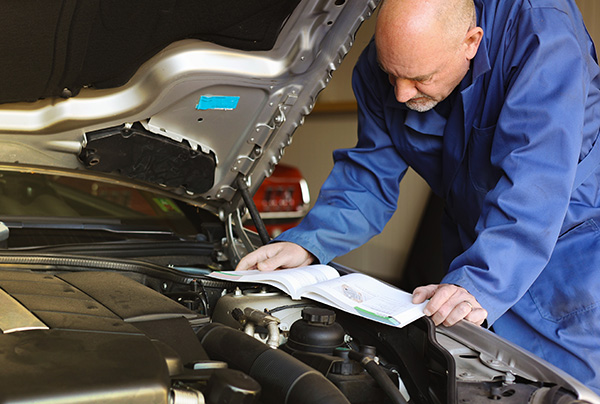
Car maintenance isn’t something most of us enjoy thinking about, but it's one of those responsibilities you simply can’t ignore if you want your vehicle to stay in good shape. Whether you're driving a brand-new car or one that's been on the road for years, sticking to a regular service schedule is essential. One of the most important maintenance routines for any vehicle owner to follow is the 30k/60k/90k service plan. But what does this actually mean, and why is it so important?
If you’ve ever wondered why your car manual suggests bringing your car in at these specific mileages, let’s explore what happens during a 30k/60k/90k service and how it helps ensure your vehicle stays reliable for the long haul.
Understanding the 30k/60k/90k Service Milestones
When you buy a car, the manufacturer sets certain service intervals designed to keep the vehicle running efficiently and safely. The 30k/60k/90k service plan follows these guidelines, marking three key maintenance checkpoints at 30,000, 60,000, and 90,000 miles.
These services aren’t arbitrary—they’re based on how different components of your vehicle age with time and use. As parts wear down, fluids degrade, and other elements accumulate wear and tear, scheduled check-ups prevent small problems from turning into expensive fixes. The idea is to catch issues early, replace consumable parts, and maintain the overall integrity of the vehicle as it racks up miles on the odometer.
While each service stage—30k, 60k, and 90k—shares some basic maintenance tasks, the deeper inspections and component replacements will vary as the mileage increases.
What’s Included in a 30k Mile Service?
At the 30,000-mile mark, your vehicle is still relatively young, but it’s already gone through quite a bit. This first major service is a comprehensive check-up, designed to ensure everything is functioning properly after those first 30,000 miles on the road. Here's what to expect:
- Oil and Filter Change: One of the most fundamental parts of vehicle maintenance, ensuring that your engine oil is clean and at the proper level is essential for engine performance.
- Brake Inspection: Your brake pads, rotors, and brake lines are inspected for wear, and replacements are made if necessary. Brake fluid may also be replaced if it’s dirty or degraded.
- Tire Rotation and Balance: To ensure even tire wear, the tires are rotated and balanced to extend their life.
- Fluid Checks and Top-Offs: Your vehicle's critical fluids—coolant, transmission, brake, and power steering—are checked and topped off or replaced as needed.
- Air Filter Replacement: Ensuring the air entering the engine is clean improves performance and fuel efficiency.
What Changes at 60,000 Miles?
By the time you hit 60,000 miles, your car has experienced more wear and tear, and additional components will need closer attention. The 60k service typically includes everything from the 30k service, but with a few more key additions:
- Spark Plug Replacement: Worn spark plugs can reduce fuel efficiency and lead to misfires. Replacing them at the 60k mark keeps your engine running smoothly.
- Transmission Service: Your vehicle's transmission fluid is often drained and replaced at this point, ensuring that your transmission continues to function correctly.
- Drive Belt Inspection: The belts in your engine are checked for wear and cracks. If needed, they’ll be replaced to prevent snapping, which could lead to a much more expensive repair.
- Coolant System Service: The coolant system is flushed, and fresh coolant is added to prevent overheating and to maintain optimal engine temperature.
Why Is the 90k Service So Important?
When your vehicle approaches 90,000 miles, it's no longer a spring chicken. The 90k service is the most comprehensive of the three milestones, and by this point, your vehicle will need a thorough inspection to ensure it remains reliable.
At 90,000 miles, the following tasks are generally included:
- Timing Belt Inspection/Replacement: In some vehicles, the timing belt is a critical component that needs replacement around this time. If it fails, the result could be catastrophic engine damage.
- Full Fluid Flushes: Many mechanics recommend flushing all major fluids—including brake fluid, transmission fluid, and coolant—by this mileage to ensure optimal vehicle function.
- Battery Test:The vehicle's battery is tested for its capacity to hold a charge, and if it's nearing the end of its life, it's replaced to avoid being stranded with a dead battery.
Why Regular Maintenance Matters
You might be tempted to skip a scheduled service if your car seems to be running just fine. But regular 30k/60k/90k service intervals are about more than just fixing immediate problems—they help prevent future ones. Keeping up with these services reduces the likelihood of unexpected breakdowns and expensive repairs, while also keeping your car running efficiently.
Skipping these services can result in hidden issues that build up over time. For example, not changing the transmission fluid can lead to poor shifting and eventual transmission failure. Neglecting spark plug replacements can lead to misfires, reducing fuel efficiency and causing engine stress.
In the long run, adhering to the manufacturer-recommended service schedule helps extend your vehicle’s life, ensures your safety on the road, and can even maintain the car’s resale value by keeping its service history intact.
Ready for a 30k, 60k, or 90k service? Keep your car running its best by scheduling an appointment with Rocky Mountain Car Care. Our expert team is here to ensure your vehicle gets the attention it needs. Call us today and book your service!